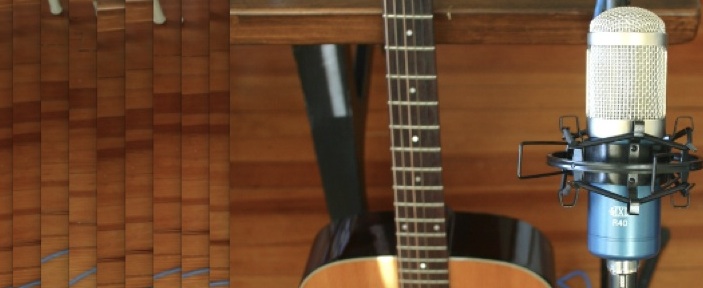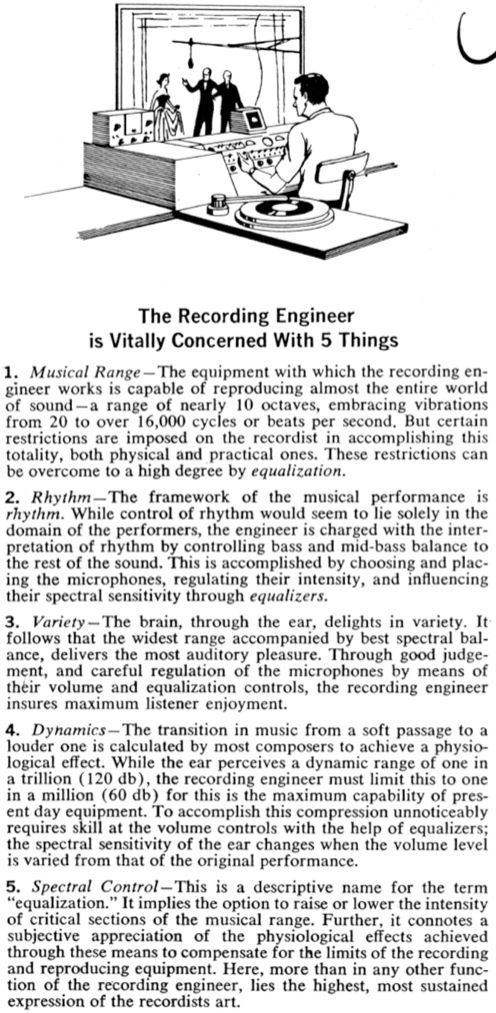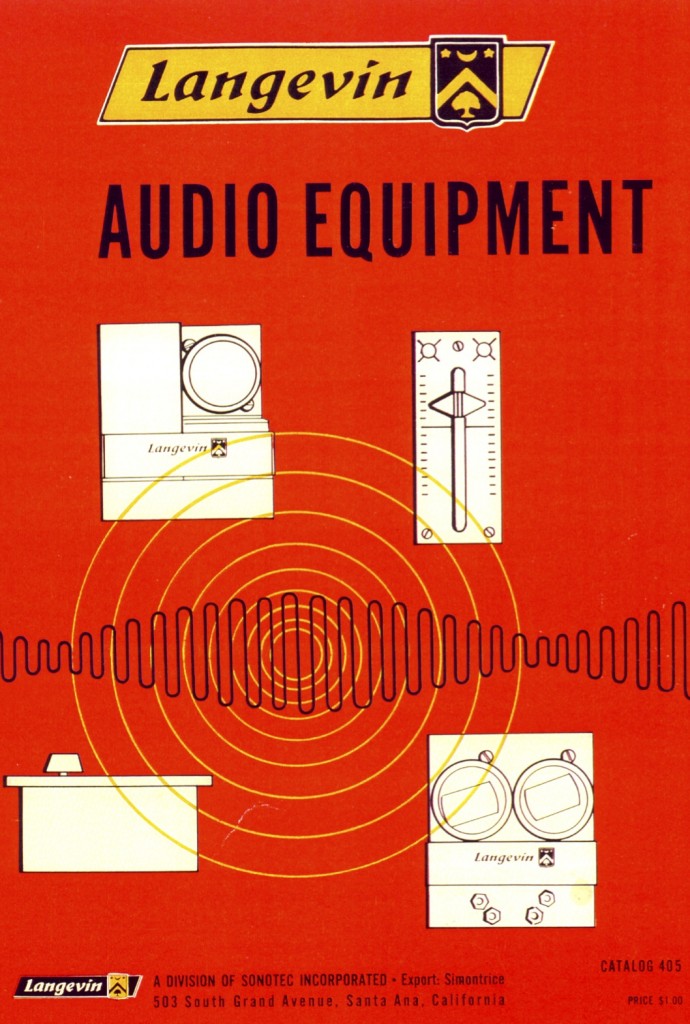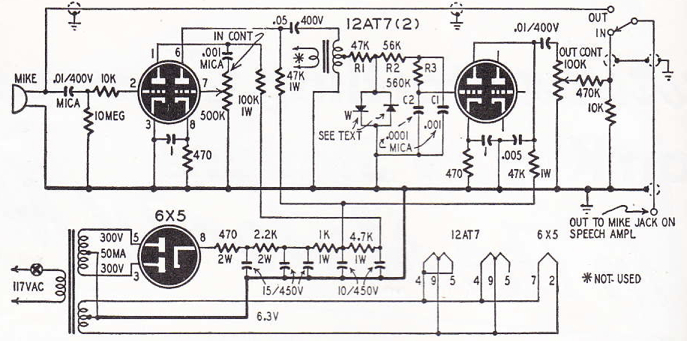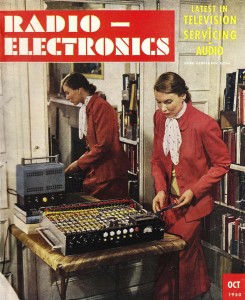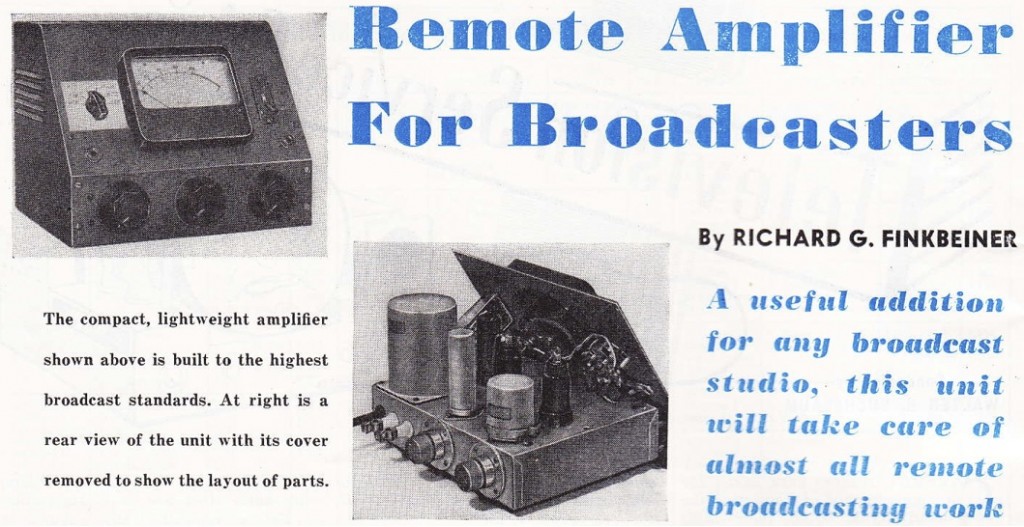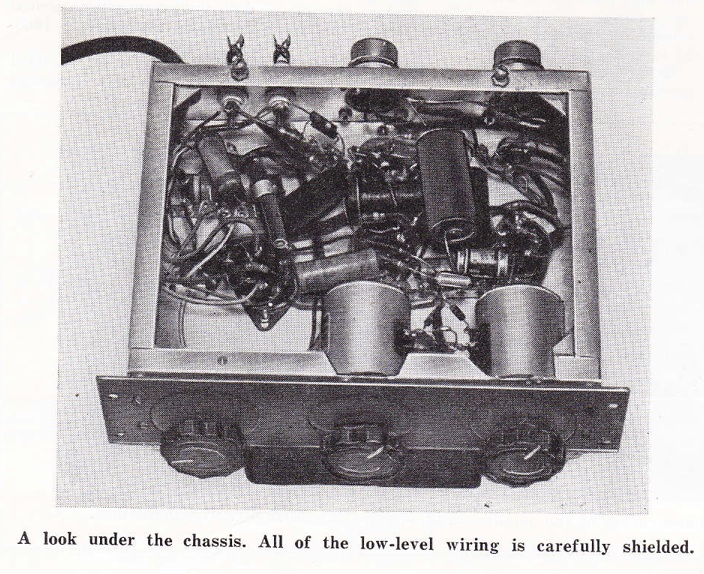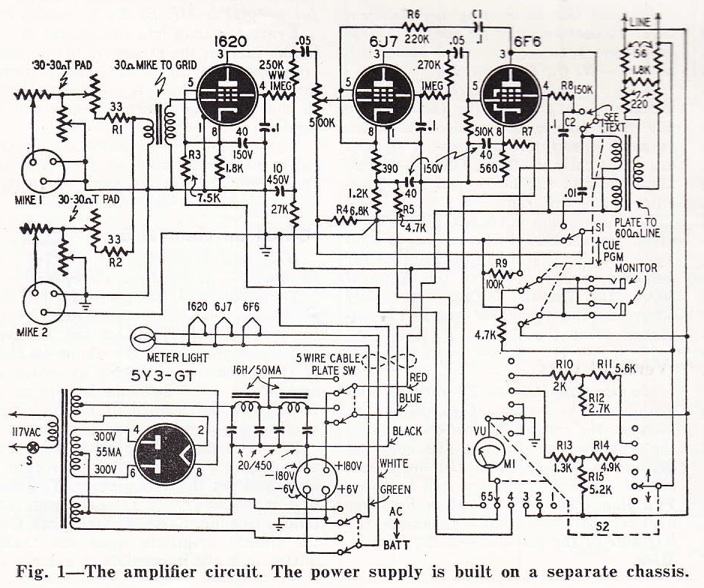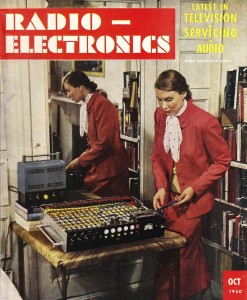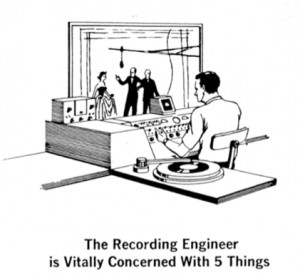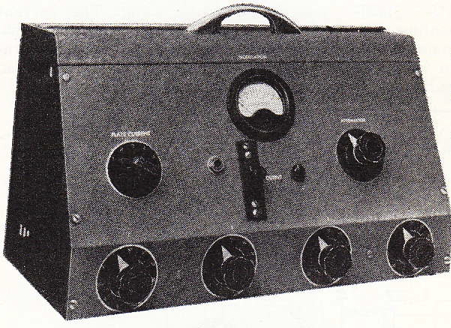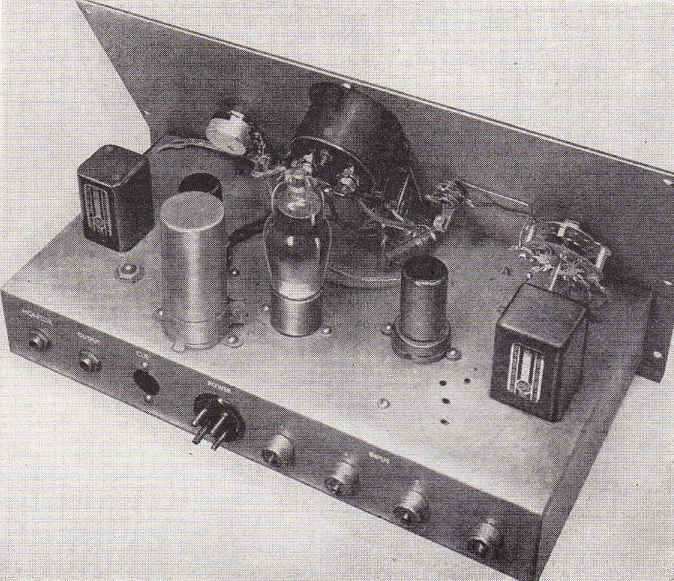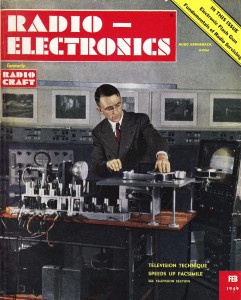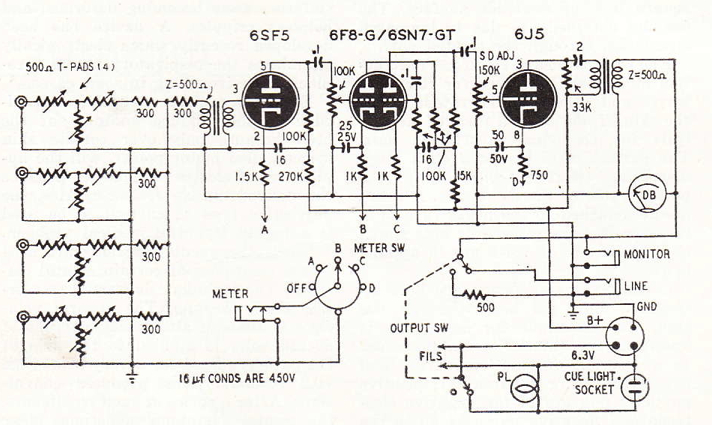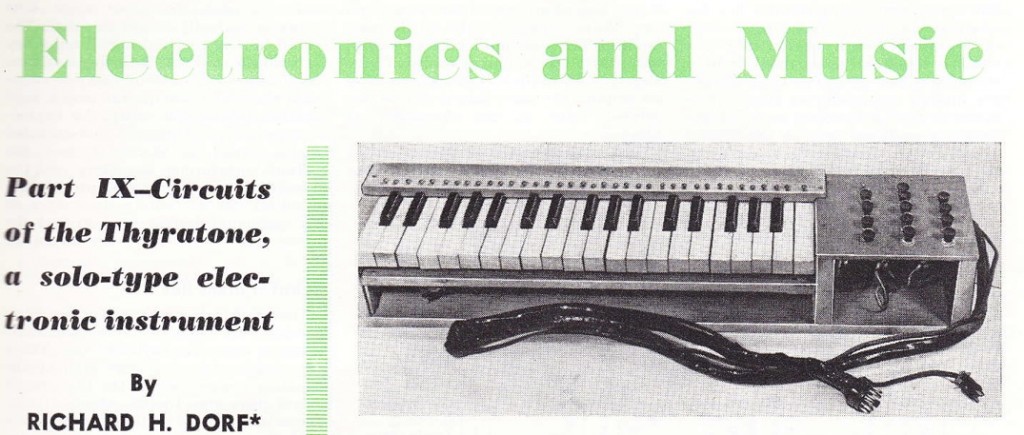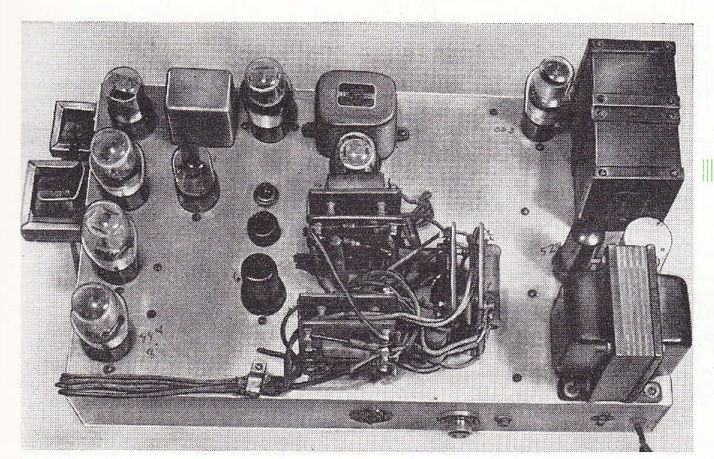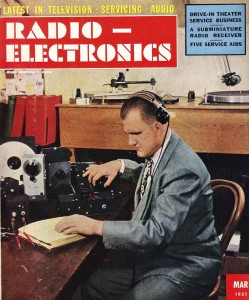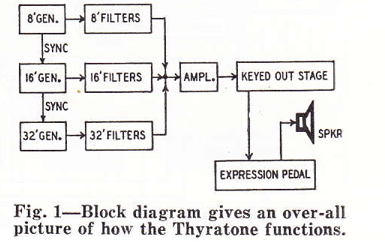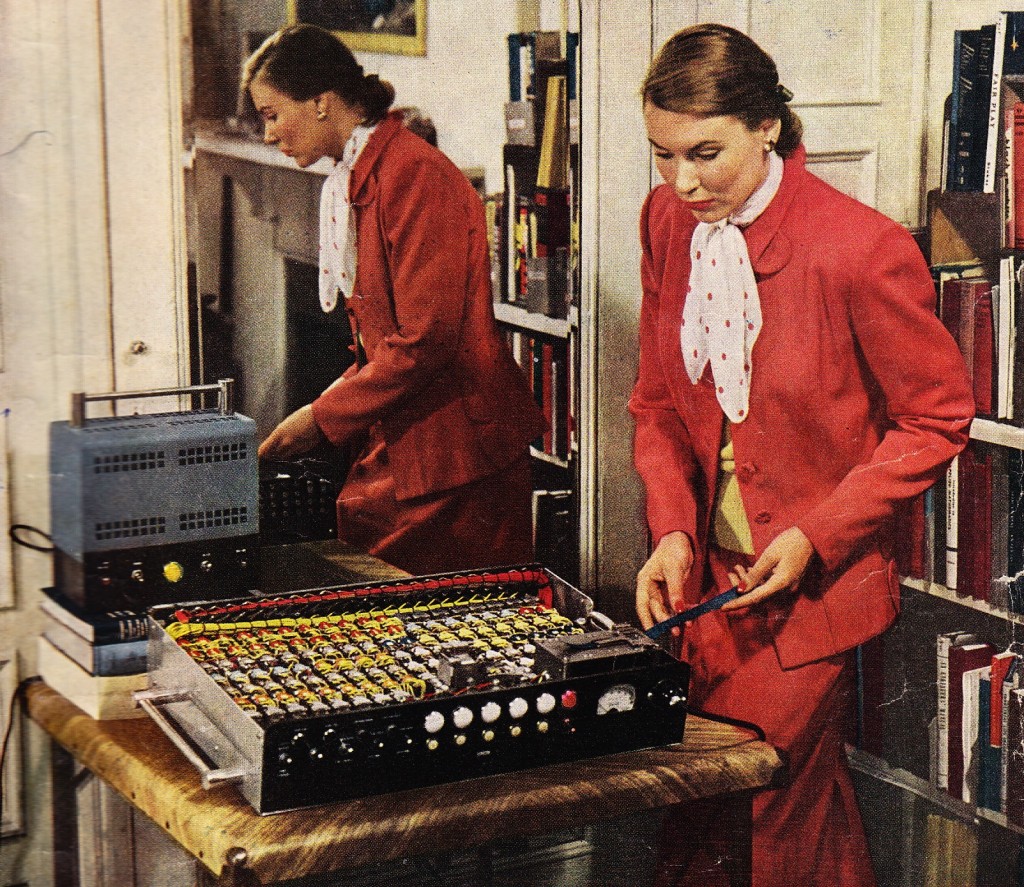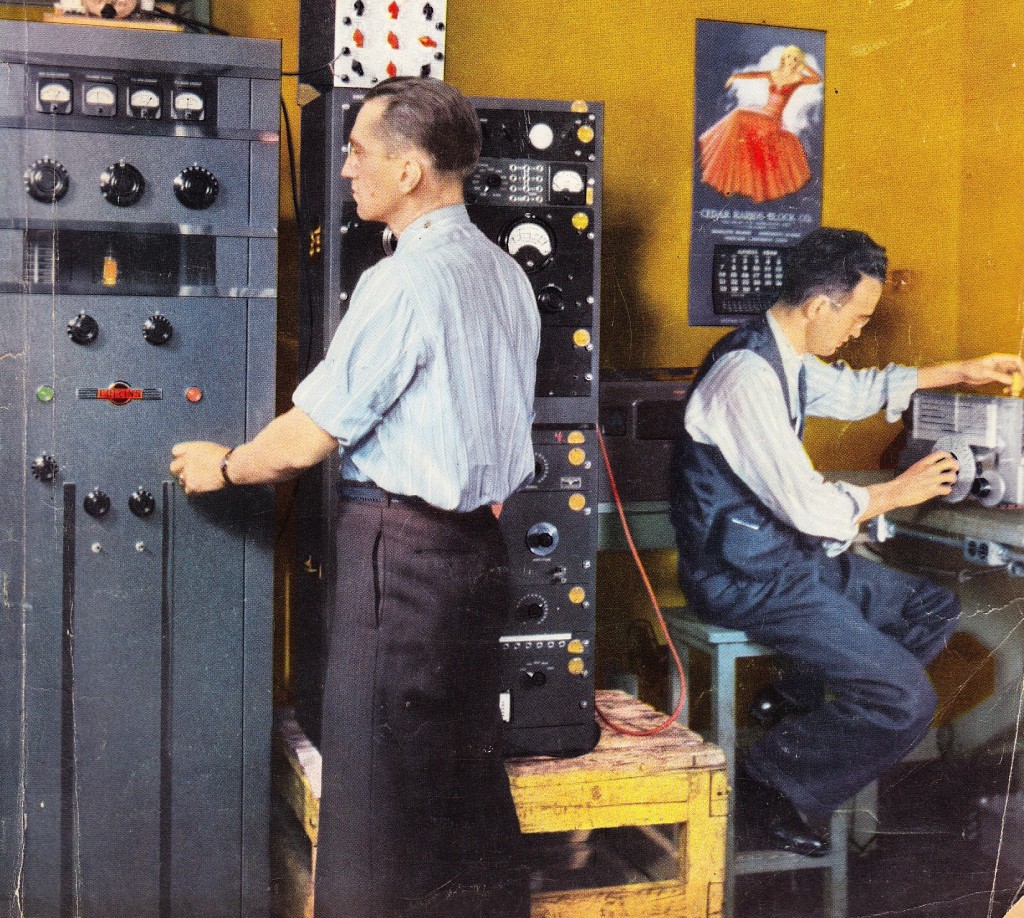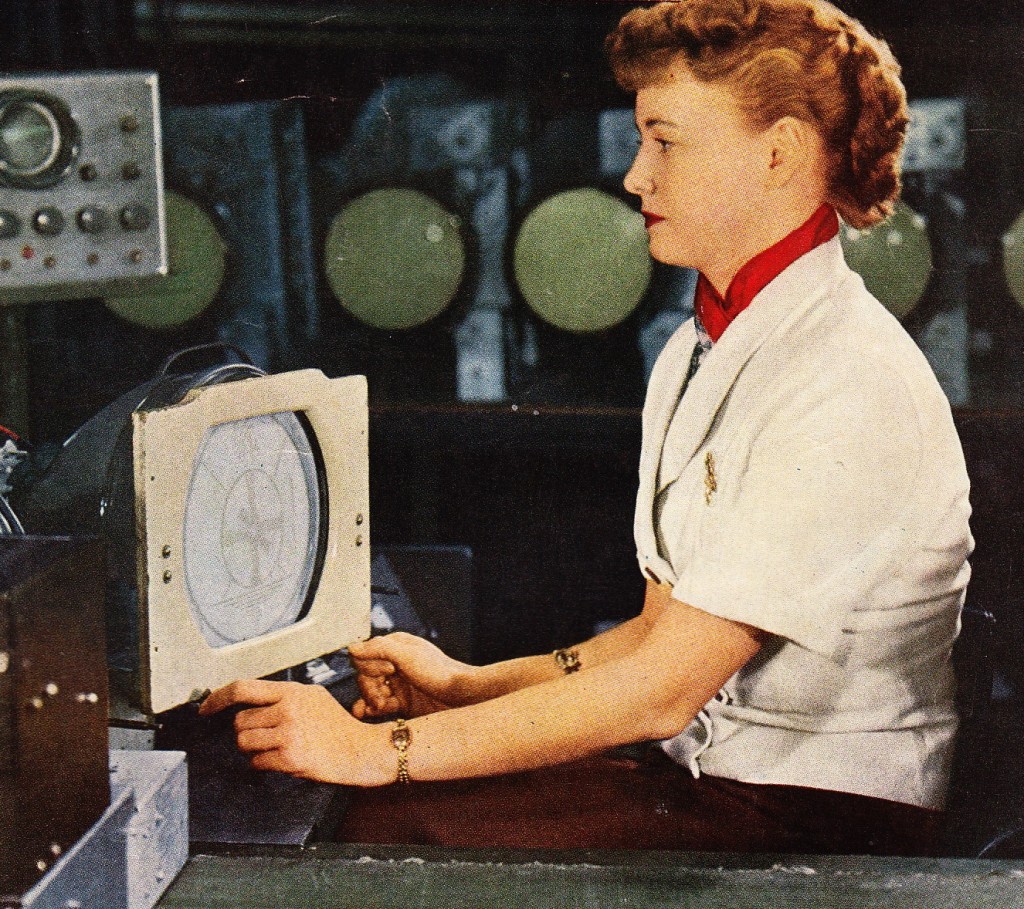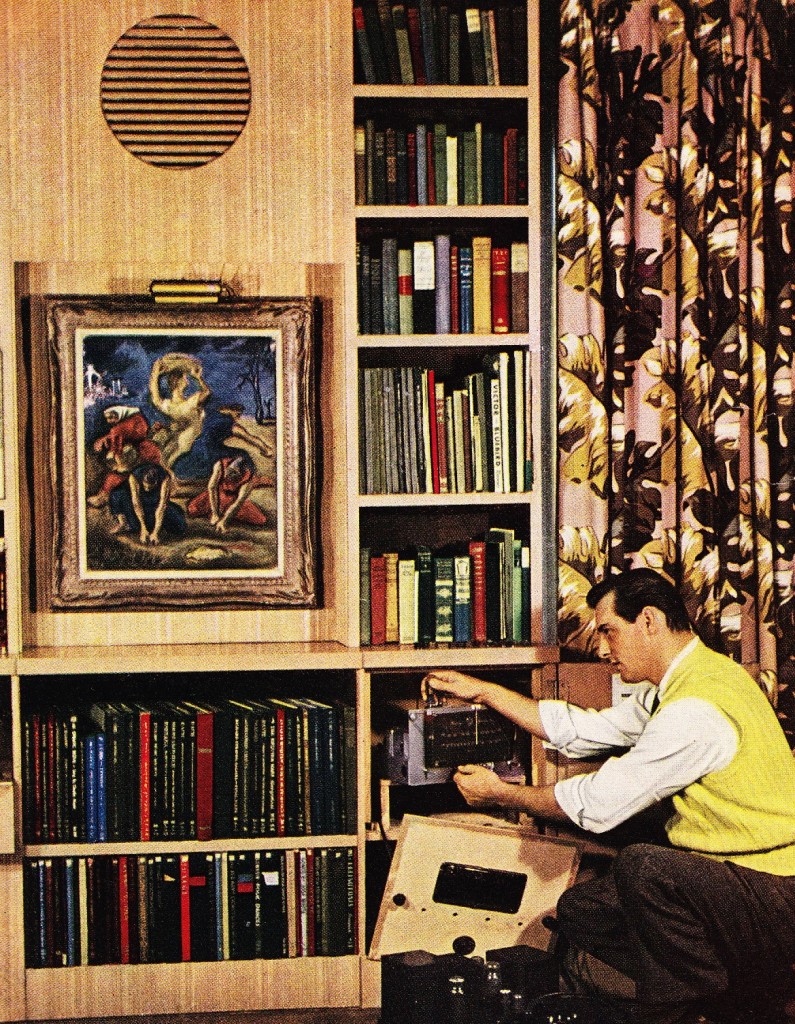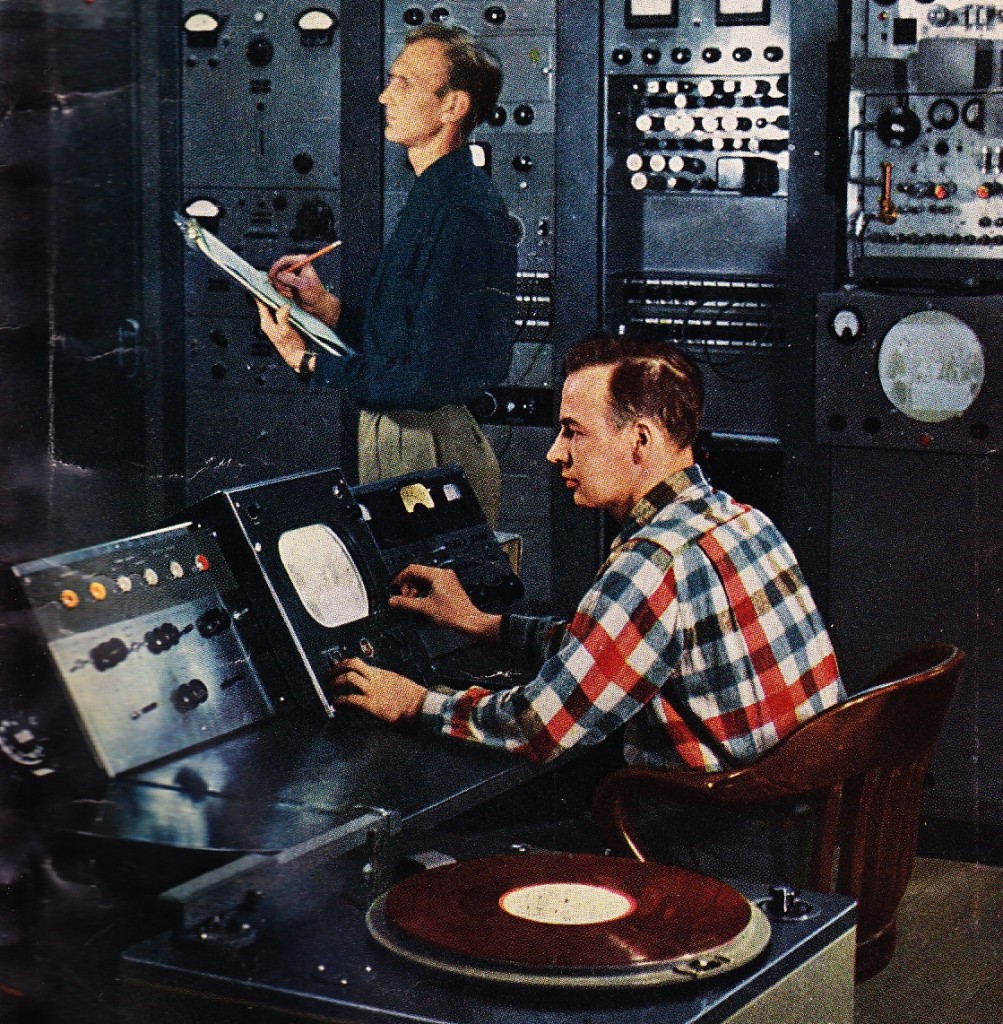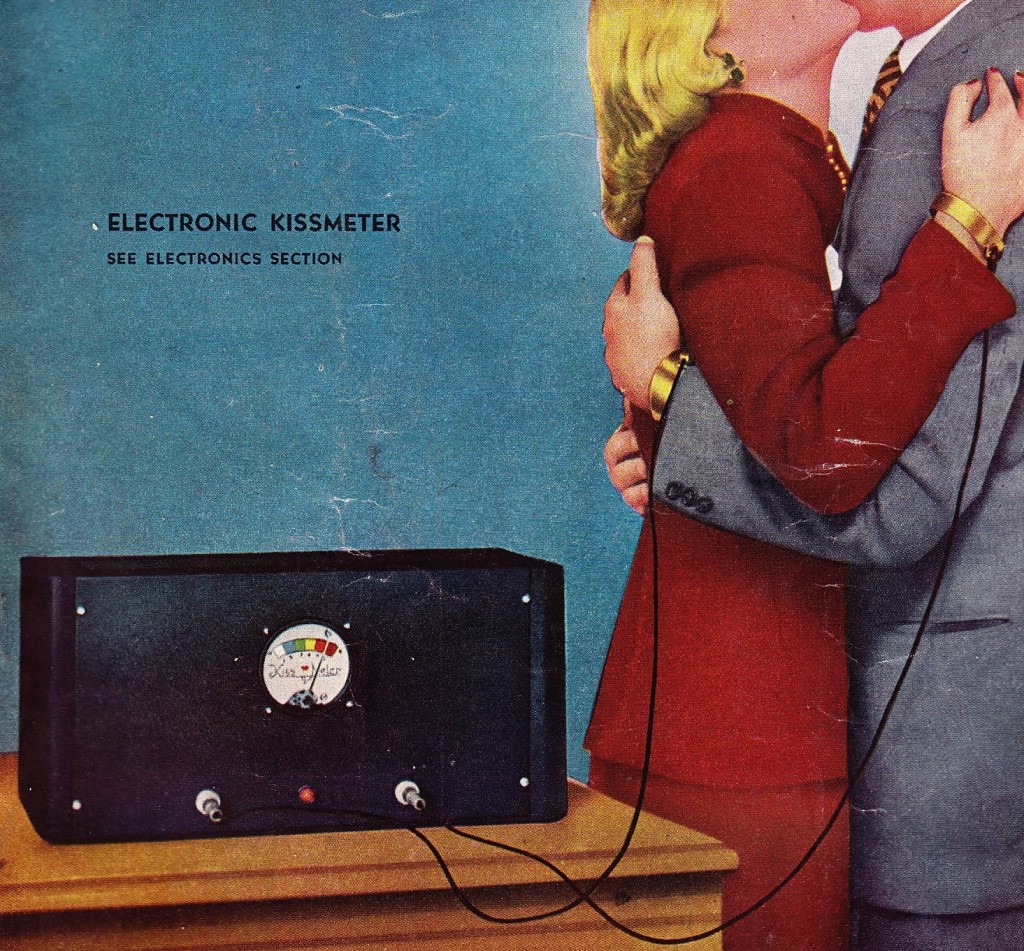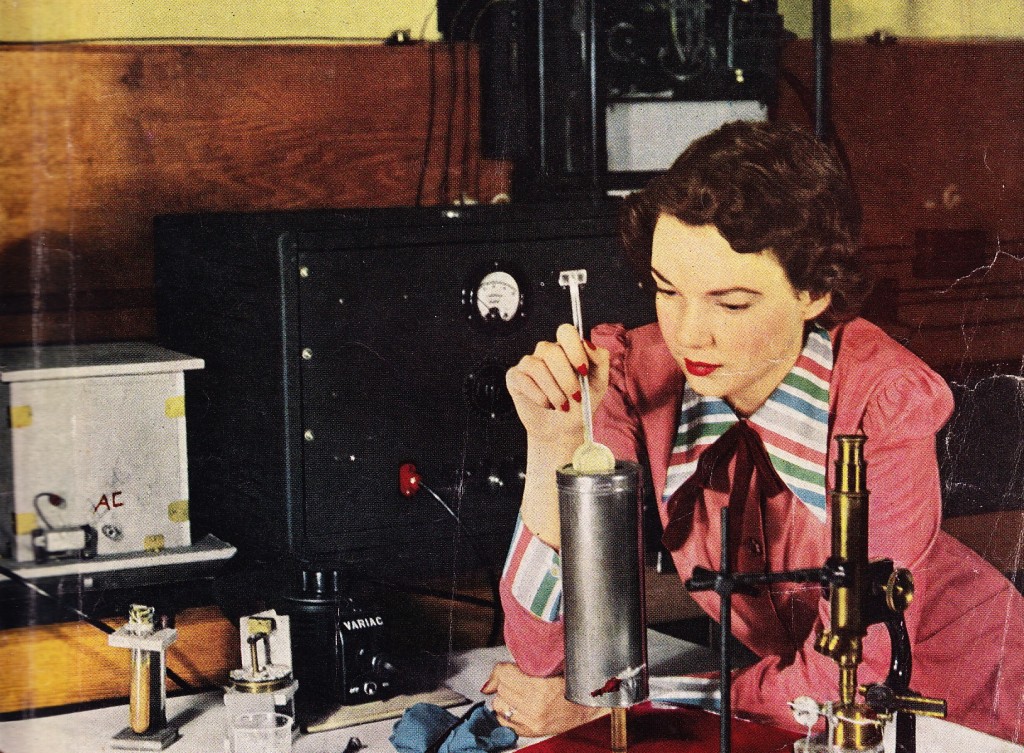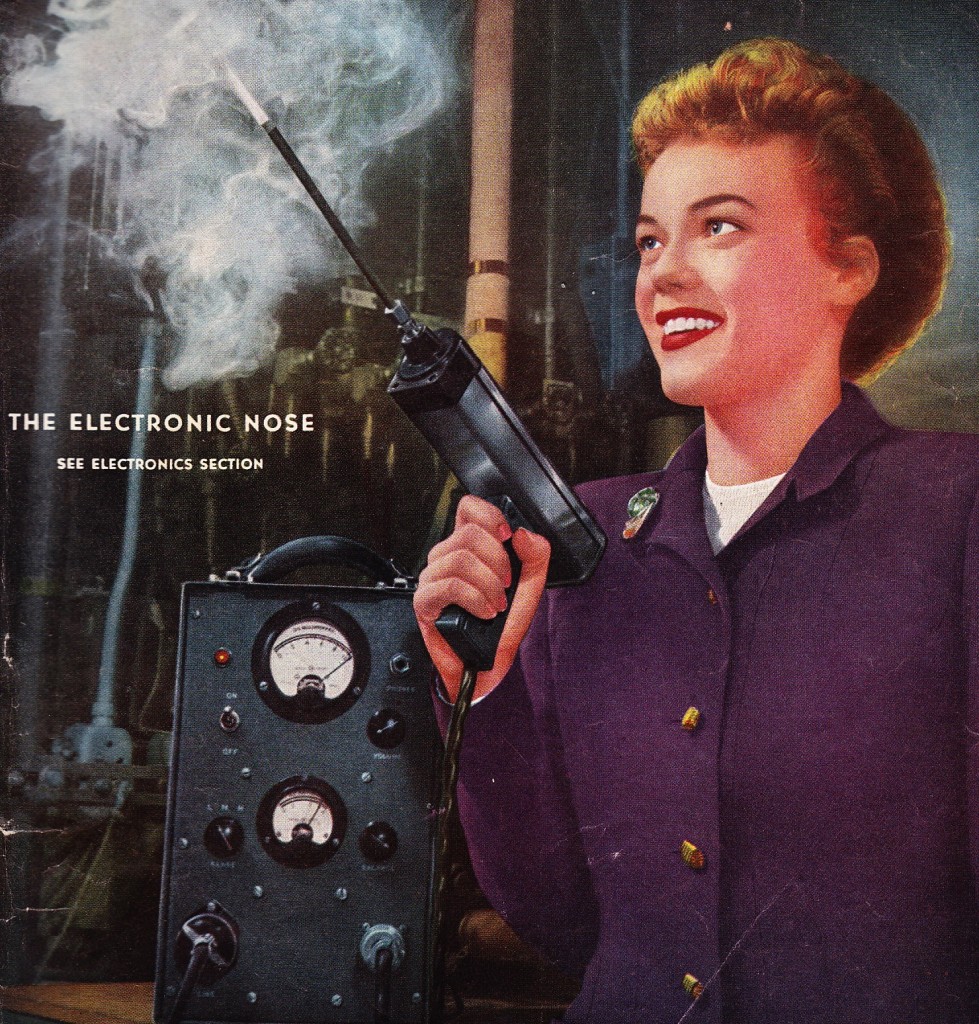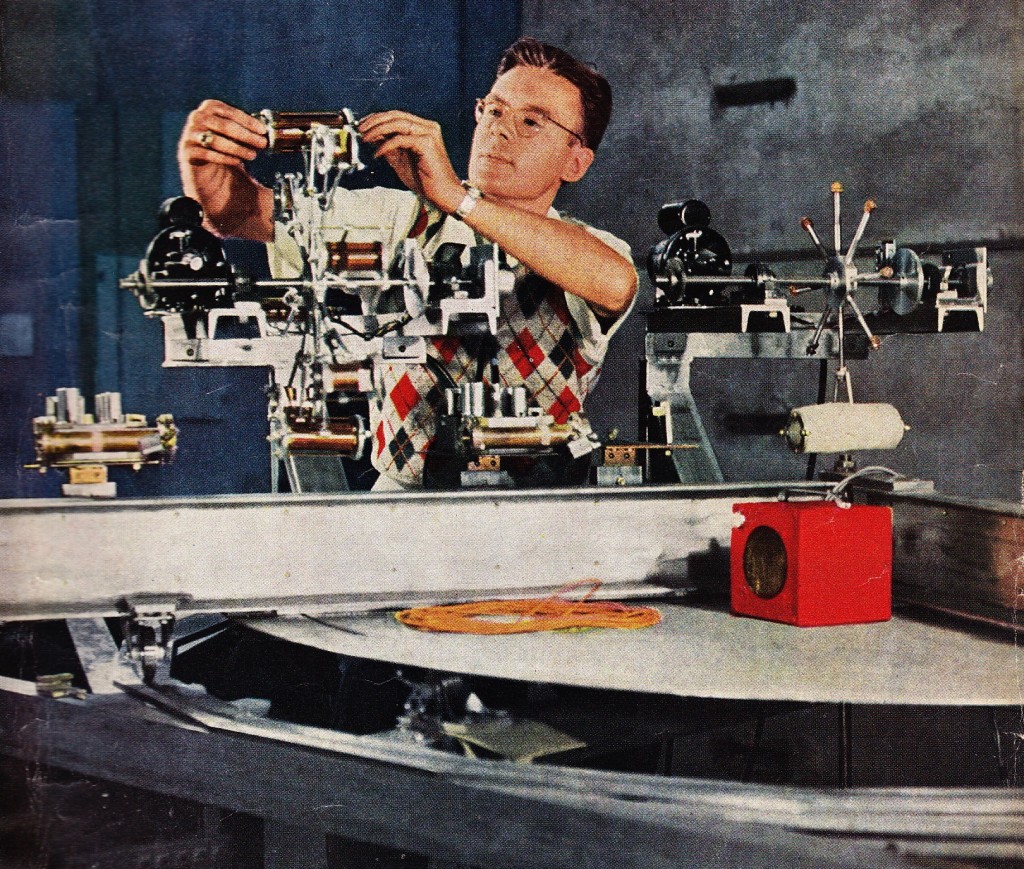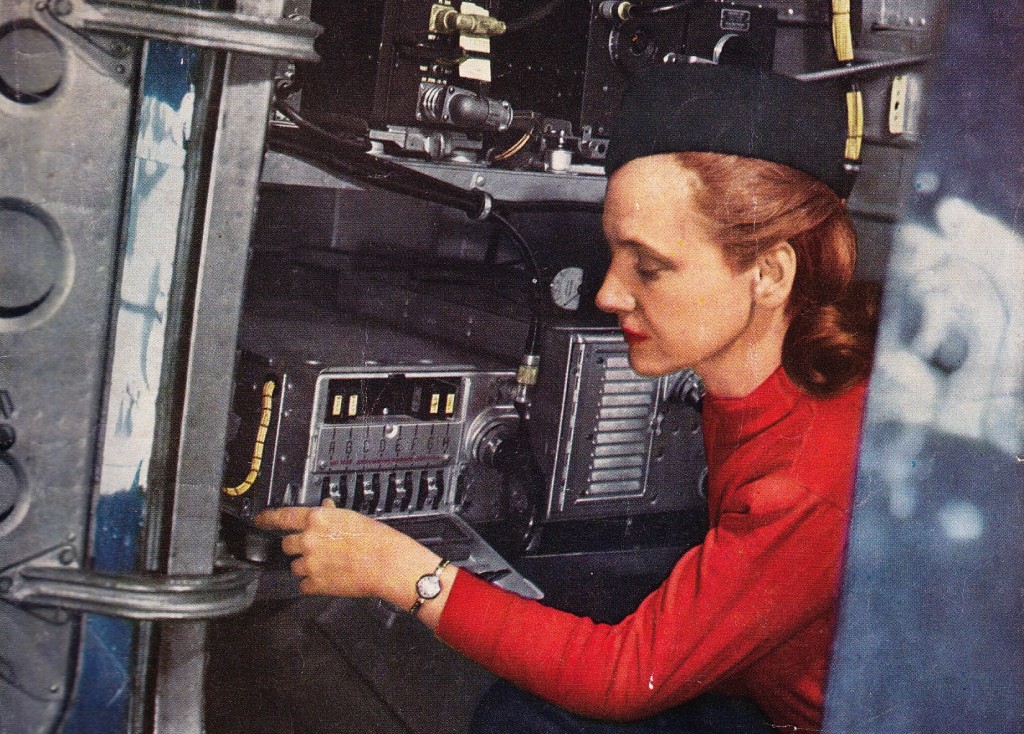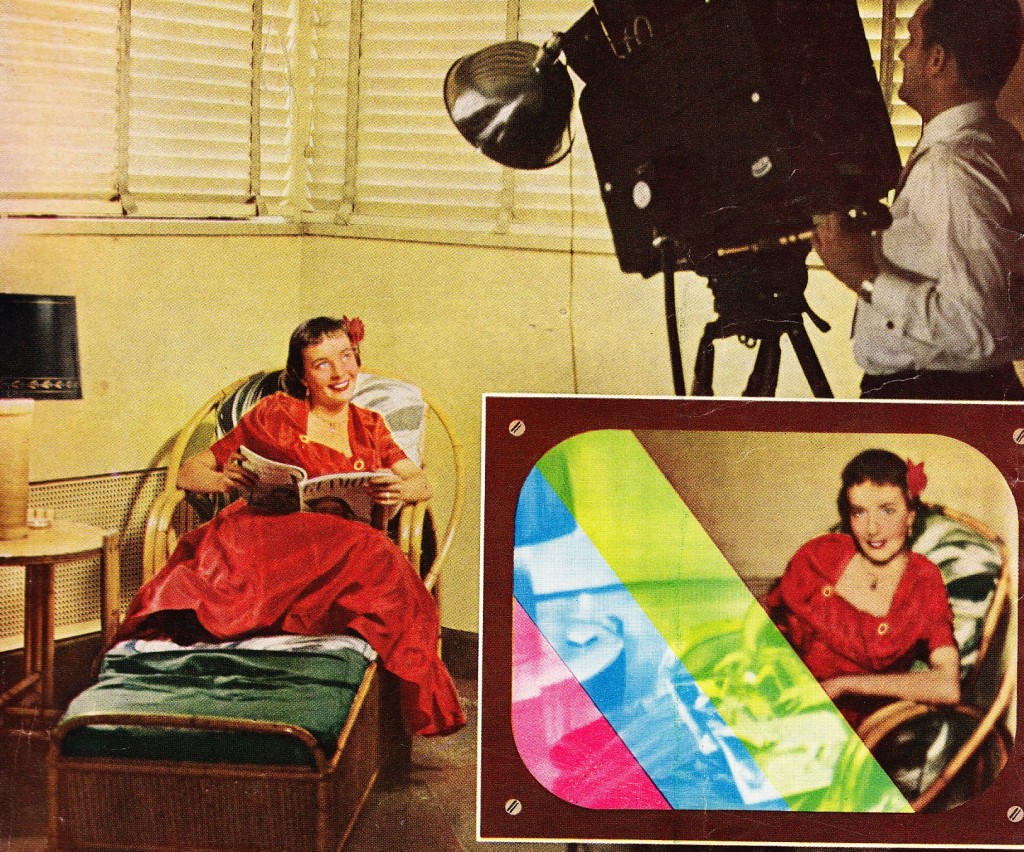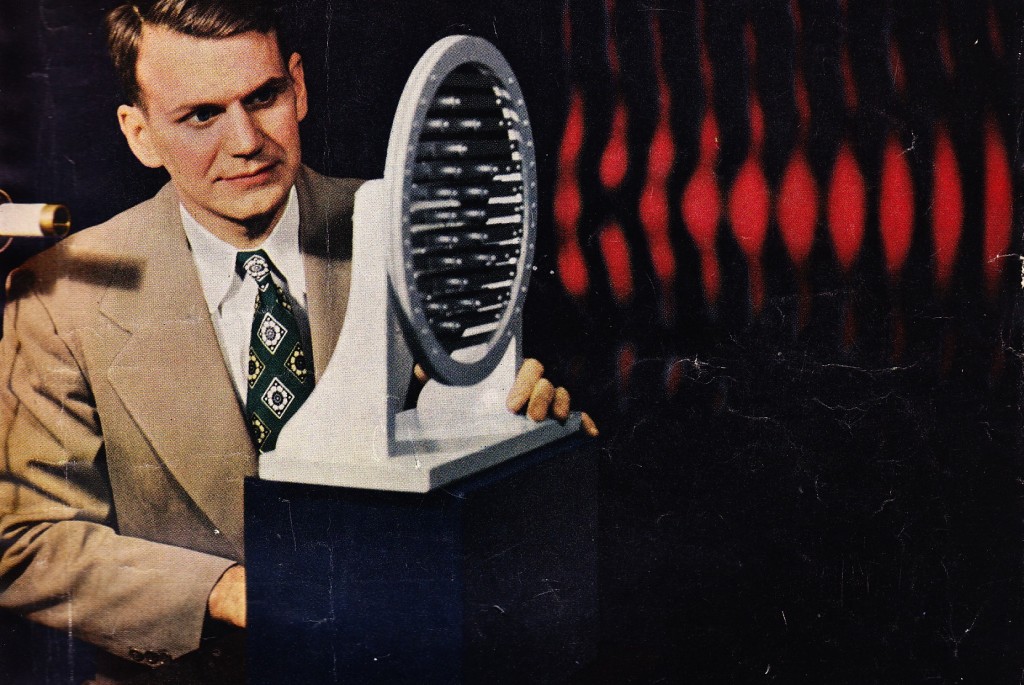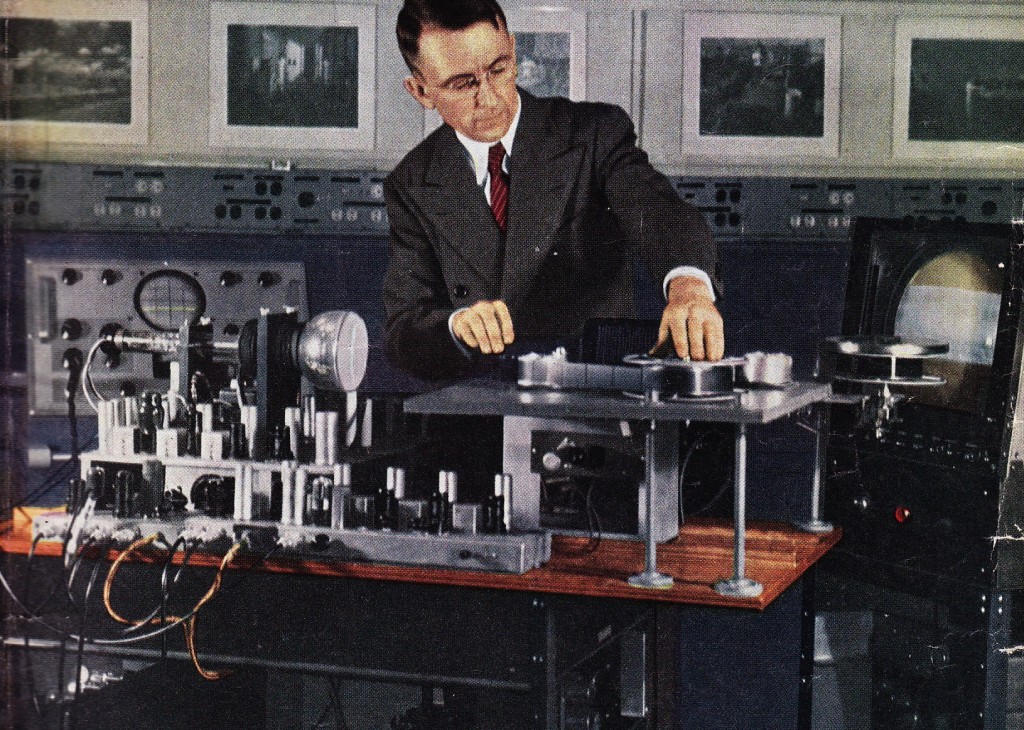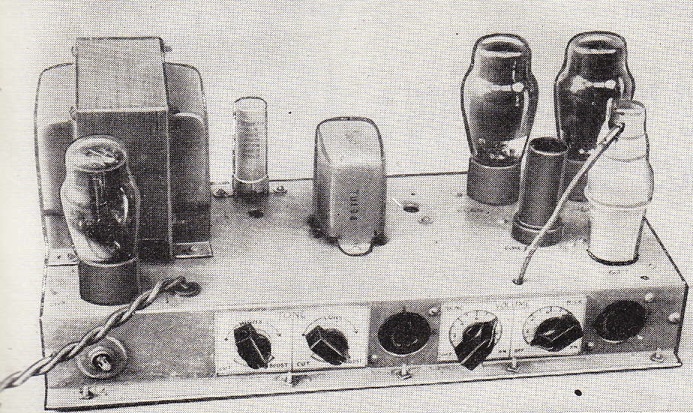 Download a three-page article from the September 1948 issue of RADIO ELECTRONICS on the subject of ‘Three Straightforward Amplifiers.” Author is John Straede. Schematics ETC are all included in the download.
Download a three-page article from the September 1948 issue of RADIO ELECTRONICS on the subject of ‘Three Straightforward Amplifiers.” Author is John Straede. Schematics ETC are all included in the download.
DOWNLOAD: Three1948Amps
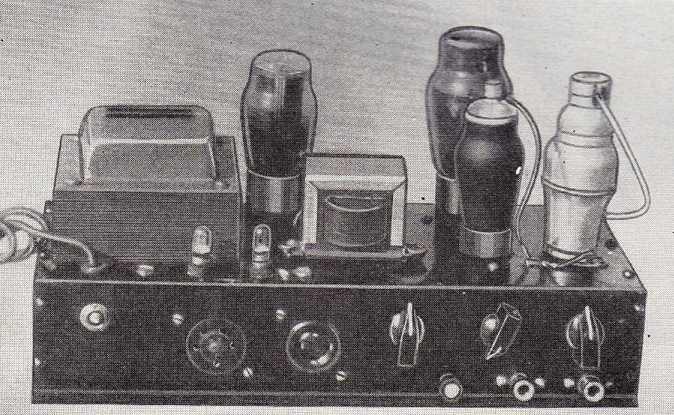 Above, the most interesting of the bunch: a single-ended 6L6 amp which uses fixed bias for the output stage. I have never seen a fixed-bias SE power amp. Seems like this could yield some unique overdriven textures for guitar applications. Worth a look.
Above, the most interesting of the bunch: a single-ended 6L6 amp which uses fixed bias for the output stage. I have never seen a fixed-bias SE power amp. Seems like this could yield some unique overdriven textures for guitar applications. Worth a look.
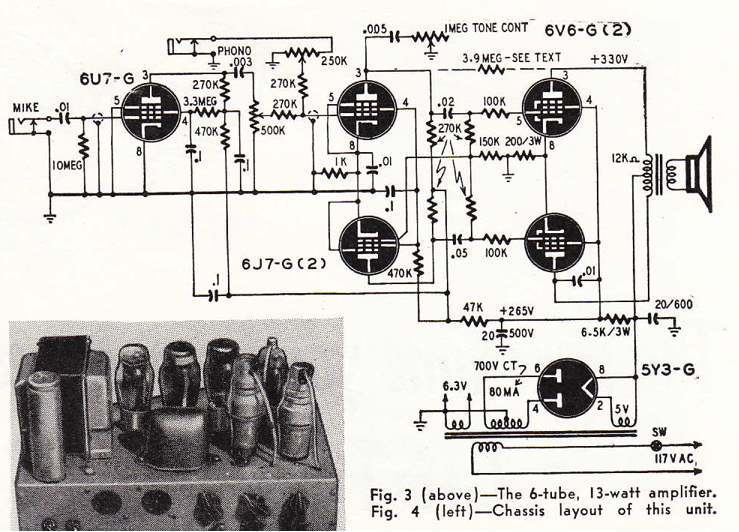 Above, the 13-watt 6V6 PP unit. A couple of things to note: the input stage uses a 6U6 pentode. I have never come across a 6U6. Anyone use one of these? Also: the 6U6 stage uses ‘Grid Leak Bias,’ in which the cathode is at ground potential and yet no DC bias is used on the grid. I have never tried this type of bias. Anyone? Is it worth trying? What are the benefits/liabilities of grid-leak bias?
Above, the 13-watt 6V6 PP unit. A couple of things to note: the input stage uses a 6U6 pentode. I have never come across a 6U6. Anyone use one of these? Also: the 6U6 stage uses ‘Grid Leak Bias,’ in which the cathode is at ground potential and yet no DC bias is used on the grid. I have never tried this type of bias. Anyone? Is it worth trying? What are the benefits/liabilities of grid-leak bias?
